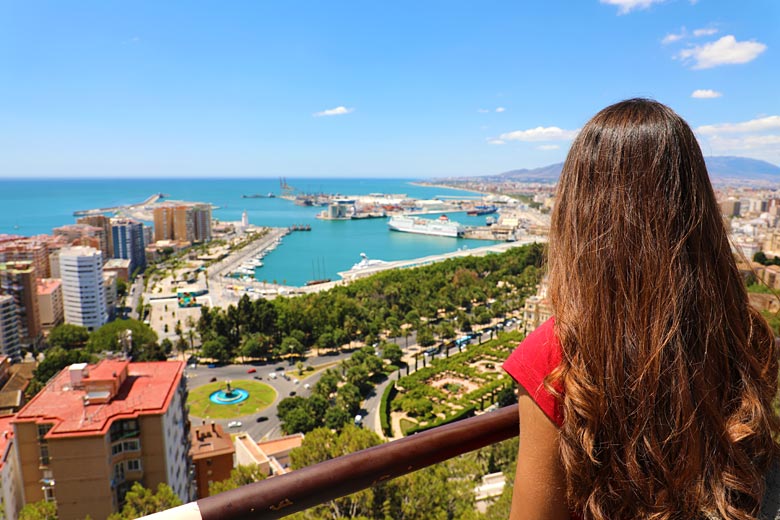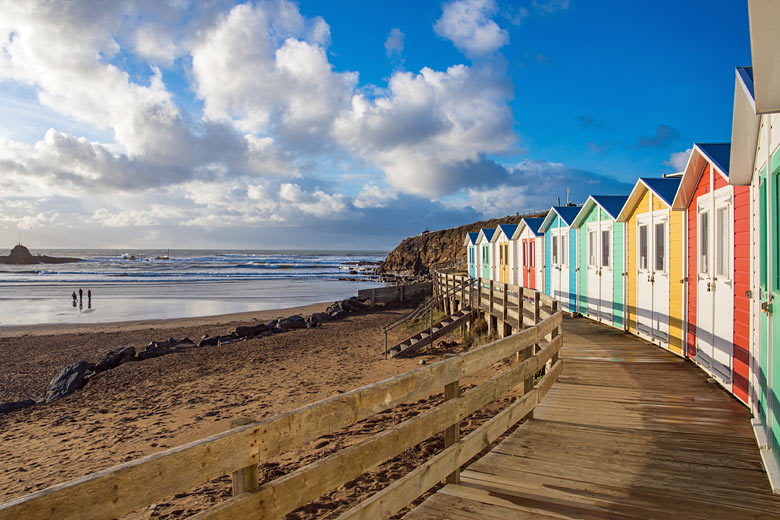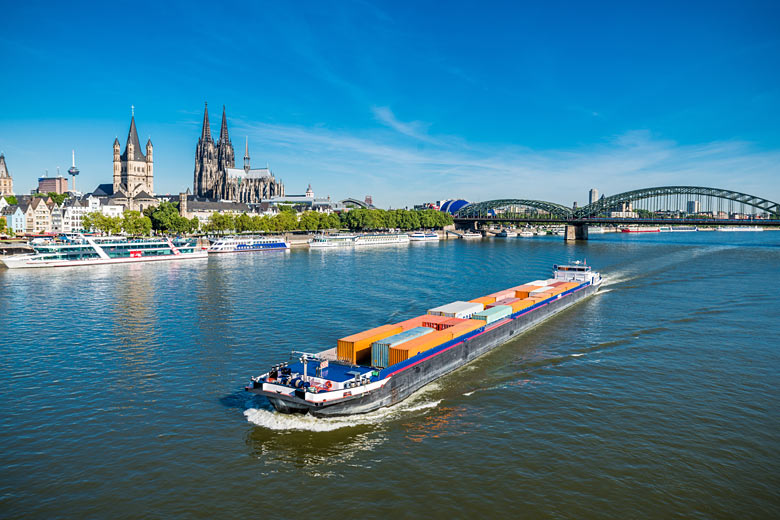Wild & full of history: why you should explore northern Tenerife
There may be resorts to suit everyone sprinkled across Tenerife's sultry southern coast but, and this is a huge 'but', push away from that tempting sandy strip and a whole different island emerges in the north.
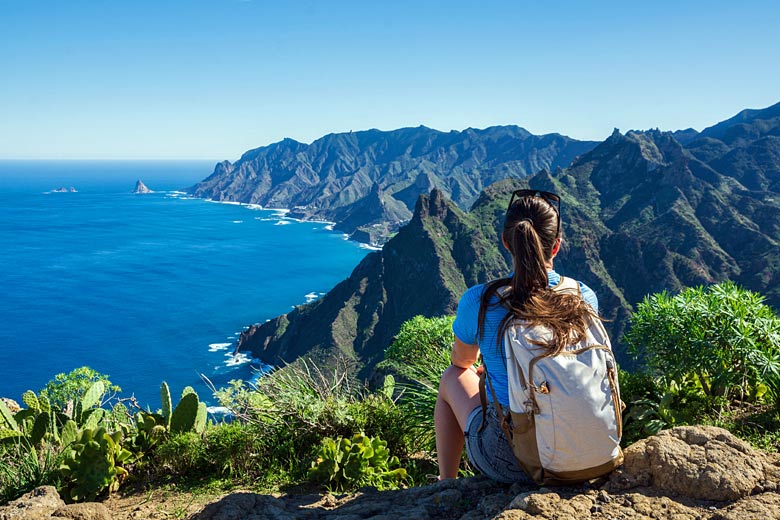
This is a spirit-soaring world, more Jurassic Park than theme park. Subtropical rainforests wrap their velvet arms around rugged mountains, craggy cliffs tumble to dramatic dalliances with the Atlantic and settlements hang on for dear life in this elemental part of the planet.
The rich landscape serves up an equally rich bounty of fruit (especially bananas); wine too, some of the best in the Canary Islands*.
Swirl in the capital of Santa Cruz de Tenerife, the remarkable UNESCO World Heritage delights of La Laguna and verdant La Orotava (the valley and the town) among other treats, and the northern part of Tenerife* stacks up for a brilliant holiday a world away from the charms of the southern resorts.
Getting to North Tenerife: find great value holidays to Tenerife with plenty of things to do with First Choice*.
Santa Cruz de Tenerife
The island's capital, Santa Cruz de Tenerife*, is seriously underrated and stacks up well for a year-round city break. It's got a great beach too at Playa de Las Teresitas, a mountain-fringed wonder that borrows its starched white sands from the Sahara.
In the city, grand Spanish colonial architecture adds historical spice (most dramatically around Plaza de España, the largest square in the Canaries), backed up by the city's most striking building, the avant-garde Auditorio de Tenerife.
Santiago Calatrava's remarkable cultural space resembles both the Sydney Opera House and a breaking wave on the waterfront; catch a performance if you can or just pop to the café and drink in the architecture.
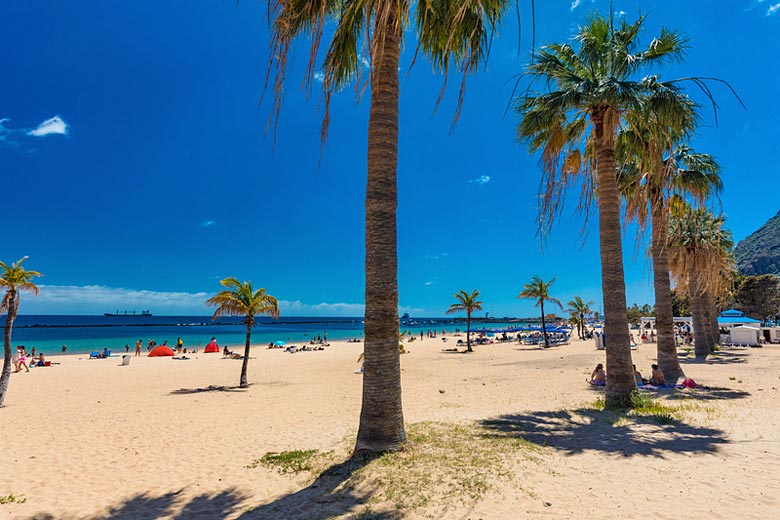
Other cultural highlights include the Museo de la Naturaleza y el Hombre, which delves as far back as the indigenous Guanche culture.
TEA (Tenerife Espacio des Arts) is a modern art star, whose triangular designs allow swathes of natural light in. Check out the permanent collections, temporary exhibitions, library, café and the arthouse cinema.
Delights at the Museo de Bellas Artes include Bruegel and Rodin. Don't miss La Noria, a picturesque historic district alive with bars, restaurants and the palpable energy of the Carnival societies that propel the world's second-largest Carnival after Rio.
Tenerife Carnival is a great time to be in the city at the start of the year, with extravagant street parades and serious partying. If you just want to chill head to shady Parque García Sanabria, the city's favourite green lung since it opened in 1926.
San Cristobal de La Laguna
This graceful inland university city, the first city to emerge in the Canaries, is easily accessible on the modern tram from Santa Cruz de Tenerife. UNESCO recognises La Laguna on its coveted World Heritage list due to the breadth of its superbly persevered Spanish colonial architecture.
It's a joy drifting around the shady streets taking in the wooden façades and hanging balconies. In recent years a new wave of independent restaurants has brought culinary creations to northern Tenerife's superb local produce, a perfect foil for the energetic student-propelled bars.
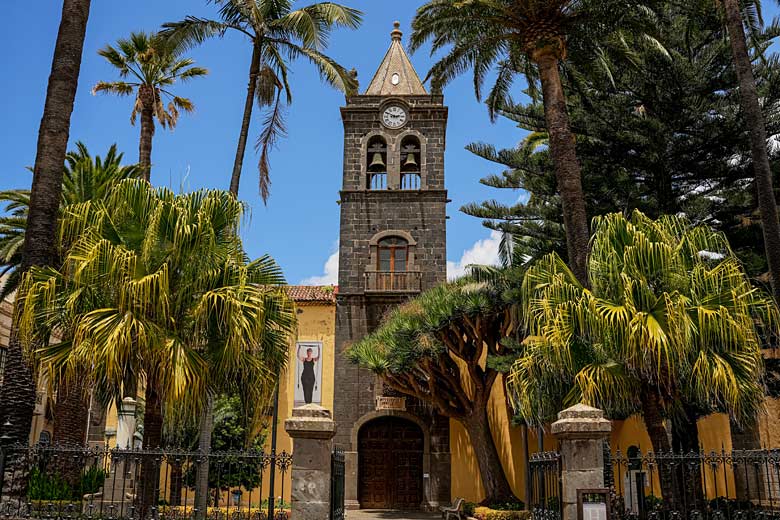
To stroll La Laguna's streets is to drift back as far as the 15th century and dip into an architectural template that was then writ large in the Spanish South American colonies.
Stand outs include the grandiose neoclassical cathedral, La Iglesia del Cristo, the elegant the convents of Santa Catalina de Siena and Santa Clara, plus a brace of elegant palaces, Nava and Salazar.
In total over 600 public and private classified buildings come under UNESCO protection. Of these, 361 were built between the 16th and 18th centuries, 96 are from the 19th century, and almost 200 hail from the first half of the 20th century.
Styles on show in this architectural extravaganza include Moorish Mudejar, neoclassical and modernist.
The Anaga Rural Park
Venture north of La Laguna and the world of man slips quickly away, lost in a senses-tingling wonderland of Tolkien-esque mountain and thick rainforest.
Tenerife lies almost 2,000 km from Madrid and it feels like it here with scenery more in keeping with South America than Europe.
Since 2015 the Anaga has enjoyed the protection of being recognised as a UNESCO Biosphere. A network of waymarked trails cross-cross the mountains, varying from short strolls, through to full-on hiking adventures.
A thrilling experience is spending the day working your way down the mountains, barrancos and laurel and pine forests to emerge on the coast, with a transfer back to Santa Cruz de Tenerife by boat. The villages that eke out life in the Anaga are handy for coffee stops and lunches too.
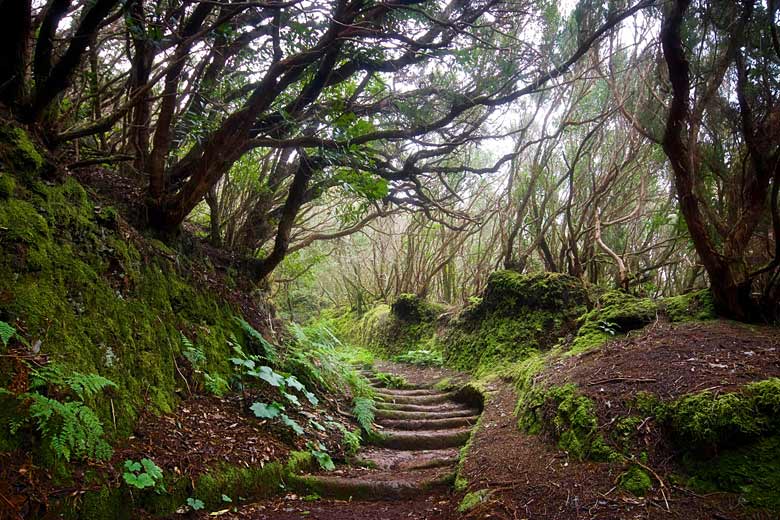
The flora and fauna of the Anaga is deeply special; over 100 species are unique to Anaga, hence the UNESCO Biosphere Reserve designation. You will find some of Europe's oldest tree species in a spirit-soaring landscape where everything just seems so much bigger, more vivid and more colourful.
There is a visitor centre if it's your first time, or you can hire a guide. You might need one when you consider the park stretches its seriously green tentacles across over 14,500 hectares. The Anaga Biofest festival in spring and autumn is a good time to visit.
Puerto de la Cruz
Long before freezing North Europeans were flocking in search of sunny solace on Tenerife's southern beaches, pioneering holidaymakers were already enjoying the soothing climes and clean air of Puerto de la Cruz.
Amongs them were novelist Agatha Christie and The Beatles. Puerto de la Cruz tempts today as a proper Spanish town, not just a resort, with authenticity and dashes of real life not always found in the southern resorts.
In the Hotel Botanico* the resort also boasts Tenerife's most classic five-star hotel, with a serious heritage and litany of rich and famous guests.
Puerto de la Cruz has black volcanic beaches to savour with swimming when conditions allow and surfing when the breaks kick in. Gentler swimming is on hand at Cesar Manrique's eye-catching 100,000 sq m Lago Martianez lido.
The centre boasts a wealth of older buildings and churches, with all roads leading down to the postcard-pretty old harbour and the cafés of lifeblood Plaza Charco.
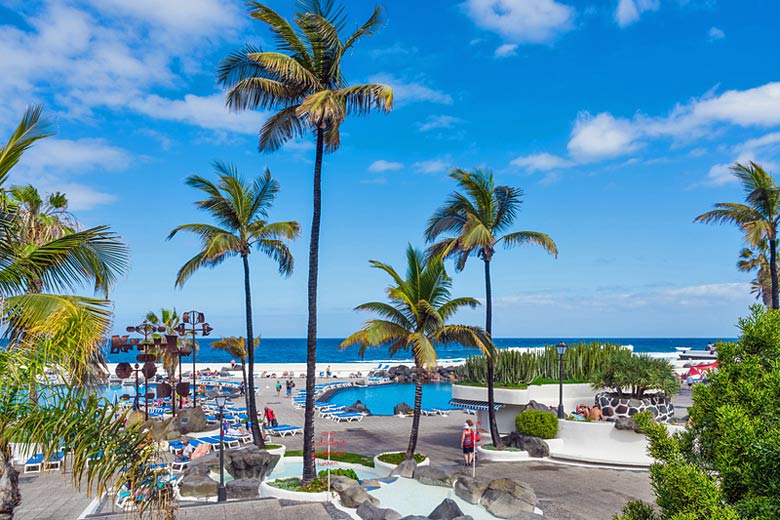
The Callejon al Muelle has been colourfully revamped as Puerto de la Cruz tries to attract more tourists. Other attractions include a renowned Botanical Gardens and Loro Parque.
The latter is a zoological park with an animal hospital where vets come from all over the world to share skills and visitors can look in, plus a charitable foundation that ploughs some of the gate receipts back into conservation projects.
La Orotava
La Orotava is both a lush valley and a little-visited town that retains swathes of authenticity. The valley soars down towards the Teide plateau with soils ideal for cultivating the excellent local wines.
They are best enjoyed either at the vineyards or in the bountiful bars and restaurants of La Orotava. Bodega Tajinaste, for example, offers tastings that cover both their deliciously bone-dry white wines (ideal with Tenerife's excellent seafood) and more full-bodied reds.
La Orotava itself dates back to the 16th century and the embryonic years of the Spanish conquest. Look out for grand merchants' houses and La Casa de los Balcones (the House of the Balconies), which dates back to 1632 and impresses with its wooden balconies, wood-carved patio and museum exhibits.
You can dine on Canarian dishes here too and savour a glass of that famous La Orotava wine. The Iglesia de la Concepción is another must-see, dating back to the 18th century.
Garachico
There's a sprinkling of towns and villages north of Puerto de la Cruz, but they are less geared to tourism and boast far less appeal than Garachico to the south.
Tenerife's main port, where the legendary Malmsey wine was exported, until a volcanic eruption blocked up its harbour with lava back in 1705, Garachico is a dramatic timewarp.
Volcanic rock and whitewashed finishes combine to give the historic buildings a homogenous appeal. Wander the palm-fringed streets taking this in, stopping off for a coffee and dipping in the natural Atlantic pools if it gets too hot. The El Caletón pools were one positive creation of the devastating volcanic eruption.
The Museo Carpinteria Antigua delves into the story behind all those lovely wooden balconies and their construction. The Castle of San Miguel, built in the 16th century, survived Garachico's eruption and is now a museum that lifts the lid on Garachico.
There's a brace of elegant historical hotels that transport you back through the centuries; very Garachico. Think shady courtyards, hardwood floors and wooden balconies.
.Both are boutique in size and glorious to stay in; choose from the 20-room Hotel San Roque, with its swimming pool and views of those gorgeous Northern Tenerife sunsets, or similarly, 20-room La Quinta Roja, which dates from the 16th century.
Climate in North Tenerife
| Jan | Feb | Mar | Apr | May | Jun | Jul | Aug | Sep | Oct | Nov | Dec | |
|---|---|---|---|---|---|---|---|---|---|---|---|---|
| Maximum daytime temperature °C |  16 16 |
 17 17 |
 18 18 |
 18 18 |
 19 19 |
 21 21 |
 24 24 |
 25 25 |
 24 24 |
 22 22 |
 19 19 |
 17 17 |
| Hours of sunshine (daily) | ||||||||||||
| Days with some rainfall |  7 7 |
 6 6 |
 7 7 |
 6 6 |
 4 4 |
 3 3 |
 2 2 |
 1 1 |
 4 4 |
 7 7 |
 8 8 |
 8 8 |
| Sea temperature °C |  20 20 |
 19 19 |
 19 19 |
 19 19 |
 20 20 |
 21 21 |
 22 22 |
 23 23 |
 24 24 |
 23 23 |
 22 22 |
 21 21 |
The above shows the climate in Puerto de la Cruz. Find out more about conditions across the island in our complete guide to the climate in Tenerife and the wider Canary Islands.
Ready to discover northern Tenerife? Check out the current online offers on holidays from First Choice.
More about Tenerife
- Overview
- Best time to visit
- Weather by month
- 5-day weather forecast
- Destinations
- Travel advice
- Deals & discounts
Tenerife by month
Jan Feb Mar Apr May Jun Jul Aug Sep Oct Nov Dec
Explore holidays in the sun for less
- Beach holidays
- Family holidays
- City breaks
- Summer holidays
- Winter sun holidays
- Holiday offers
- Top travel brands
- Airlines & flights
- Discount hotels
- Airport parking deals
- TUI
- Jet2holidays
- easyJet holidays
- Love Holidays
- January sales
Airport parking
- Manchester Airport
- Stansted Airport
- Bristol Airport
- Luton Airport
- Birmingham Airport
- Edinburgh Airport
- Gatwick Airport
- Glasgow Airport
- Newcastle Airport
Airport lounges
- Manchester Airport
- Birmingham Airport
- Bristol Airport
- Edinburgh Airport
- Glasgow Airport
- Heathrow Airport
- Newcastle Airport
- Stansted Airport
- Gatwick Airport
Be inspired
Get your weekly fix of holiday inspiration from some of the world's best travel writers plus save on your next trip with the latest exclusive offers
We promise not to share your details
















